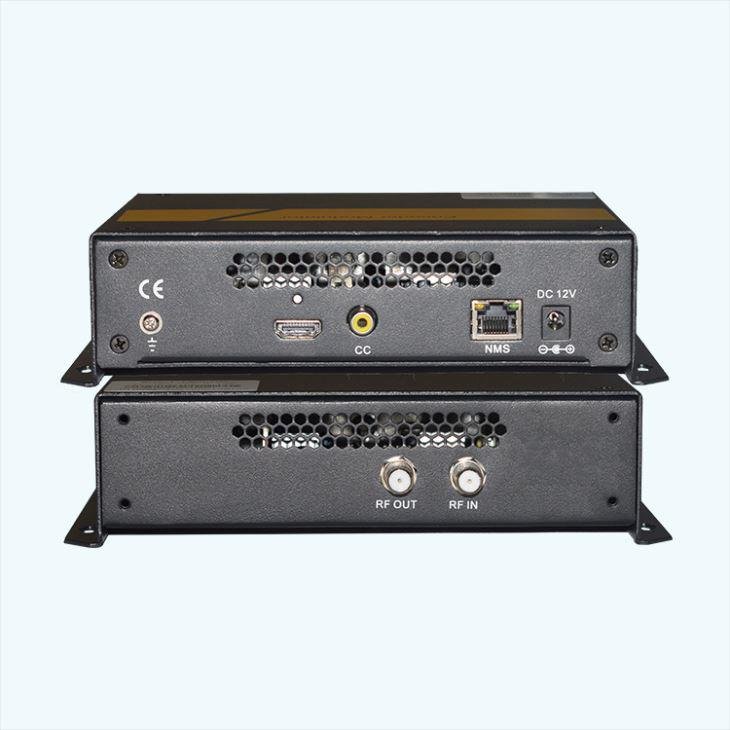DVB is the abbreviation for Digital Video Broadcasting. DVB is an initiative that consists of 200 businesses, and this team is responsible for both broadcasting and the Digital Media Delivery System. This organization has an annual membership fee, and it is controlled by the Memorandum of Understanding (MoU).
The Digital Video Broadcasting project members create the specifications and agree on them. After that, the ETSI, EBU, and CENELEC agree and standardize it.
DVB-C Vs. DVB-T
DVB-C is in charge of cable TV, while DVB-T is in charge of terrestrial TV. DVB-C requires a home cable connection, and you receive your TV over the cable network, whereas DVB-T uses an antenna.
The advantage of DVB-T antennas is that, in comparison to older antennas, they are pretty compact and may even be used as an interior antenna.
Can You Watch Both DVB-C and DVB-T on TV?
Yes, you can. To do so, you’ll have to carry out the channel search with an Antenna and repeat it with Cable.
Some Smart TVs come with an integrated tuner that enables users to view free cable (or digital DVB-C) channels from their cable provider and free-to-air antenna (or digital DVB-T) channels.
However, it’s not possible to watch DVB-C and DVB-T channels simultaneously.
Meaning of DVB-C
DVB-C is an abbreviation for Digital Video Broadcasting Cable. The letter C stands for Cable Television. DVB-C refers to a signal that travels from the Digital Headend to the subscriber. These signals are transmitted through fiber-optic and coaxial cables from the headend to the subscriber end.
It employs 64 QAM or 256 QAM modulation techniques. MPEG 2 and MPEG 4 compression techniques are employed in DVB-C.
Every modern TV has a built-in DVB-C tuner. As a result, unless you wish to use additional functions that aren’t available on your TV, you don’t need an external Set-Top Box.
Features of DVB-C
• It stands for Digital Video Broadcasting-Cable in abbreviated form.
• MPEG-2 or MPEG-4 compression is used.
• 16 QAM or 256QAM data modulation
• FEC is implemented using an RS encoder.
• The chain uses the interleaving module.
• Cable TV signals are delivered to subscribers via coaxial or fiber-optic cables from cable service providers.
• DVB-C operates on frequencies ranging from 55.25 to 403.25 MHz.
Meaning Of DVB-T
DVB-T is an abbreviation for Digital Video Broadcasting Terrestrial. The best part of DVB-T is that it allows you to use a small indoor antenna instead of a standard roof-mounted antenna.
DVB-T uses the UHF and VHF frequencies and employs the 16 QAM and 64 QAM modulations. DVB-T also uses Orthogonal Frequency Division Multiplexing (OFDM) and transmits compressed data in MPEG format.
DVB-T is the most frequently used digital TV standard for terrestrial TV transmissions worldwide. It has many features and uses of the available radio frequency spectrum better than prior analog transmissions.
Features of DVB-T
• It stands for Digital Video Broadcasting-Terrestrial in abbreviated form.
• Coded OFDM is the transmission modulation technique.
• It uses the MPEG standard to transmit compressed audio and video.
• It utilized the QPSK, 16QAM, and 64QAM data modulation techniques.
• It uses an external encoder (RS encoder 204,188) and an internal encoder (convolutional coder).
• Interleaver is used both internally and externally.
• DVB-T employs mainly 6MHz, 7MHz, and 8MHz bandwidth VHF and UHF frequency channels.
What is digital DVB-C?
DVB-C (Digital Video Broadcasting – Cable) is a DVB European consortium standard for Digital Television Broadcast Transmission through cable. This system uses QAM modulation with channel coding to transmit a MPEG-2 or MPEG-4 family digital audio/video stream.
What is a DVB-C receiver?
DVB-C receivers are digital cable television receivers. DVB-C provides a vast selection of free and high-definition TV shows in Germany. With DVB-C receivers, you can also receive Pay TV shows by inserting charged Smart cards.
How does DVB-T work?
DVB-T is a digital transmission format that sends data in discrete blocks at a symbol rate. The Guard Interval is used in DVB-T, a COFDM transmission technology. It enables the receiver to deal with multi-path circumstances that are extremely powerful.

